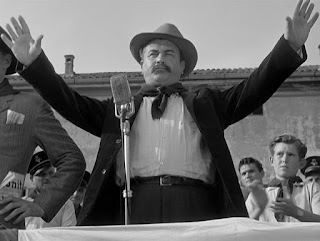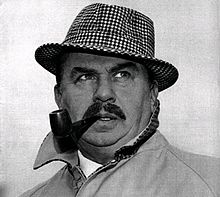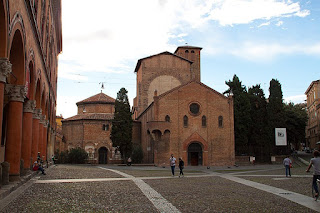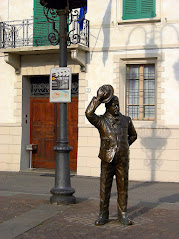Giovanni Gaeta - composer and songwriter
Post Office worker whose songs became famous
The poet, composer and lyricist Giovanni Gaeta, whose classic Neapolitan songs brought him fame under his pseudonym E A Mario, was born on this day in 1884 in Naples. Gaeta’s compositions as E A Mario, such as Santa Lucia luntana and Balocchi e profumi, were performed by some of the world’s greatest voices, from Enrico Caruso to Luciano Pavarotti, and became staples in the repertoire of Neapolitan song specialists such as Peppino di Capri, Mario Abbate and Bruno Venturini. He was also responsible for La canzone del Piave - the Song of the Piave - which he wrote to commemorate the bravery of Italian soldiers in repelling an attempt by the Austrian imperial army to inflict a decisive victory on the Piave front in northeast Italy in 1918, a show of resistance that hastened the end of the First World War. The song became one of Italy’s most famous patriotic songs and was briefly adopted as the country’s national anthem. Yet Gaeta’s talent never made him wealthy. In need of money to care for his sick wife, Adelina, he sold the rights to all his songs to a Milan publishing house, thereafter receiving very little of the royalties they generated. Read more…
________________________________________
The Expedition of the Thousand
Garibaldi's Spedizione dei Mille launched from Genoa
The Expedition of the Thousand, the military campaign to unite Italy led by the soldier and revolutionary Giuseppe Garibaldi, was launched on this day in 1860. The campaign, in some ways the climax of the Risorgimento movement, began in response to an uprising in Sicily, when Garibaldi set sail from Genoa, with a makeshift army of volunteers, hoping his support would enable the rebels to overthrow the Bourbon rulers of the island. The greater purpose, though, was to achieve another step towards his ultimate goal, which he shared with his fellow nationalist revolutionary, Giuseppe Mazzini, and which was supported by King Victor Emmanuel II of Sardinia-Piedmont and his prime minister, Camillo Benso di Cavour, that of creating a united Italy. The revolutionary leader in Sicily, Francesco Crispi, had all but guaranteed that substantial numbers of Sicilians would fight on the side of Garibaldi’s troops. Some accounts suggest Garibaldi, who had commanded military campaigns in Europe and South America and was a charismatic figure, had wanted to lead his followers into an attack on the French occupiers of Nice, his home city, but was persuaded to turn his attention to Sicily by Cavour, who feared a war with France would result. Read more…
______________________________________
Francesco Bussone da Carmagnola – condottiero
Adventurous soldier lived on in literature
The soldier of fortune, Francesco Bussone da Carmagnola, who has been featured in poetry, books and an opera, was executed on this day in 1432 in Venice. The military leader had been seized, imprisoned and brought to trial for treason against La Serenissima, the Most Serene Republic of Venice, and was beheaded between the columns of San Marco and San Todaro at the entrance to the Piazzetta. Francesco Bussone had been born at Carmagnola near Turin into a peasant family. He began his military career at the age of 12, serving under the condottiero, Facino Cane, who was in the service of the Marquess of Monferrat at the time, but later fought for Gian Galeazzo Visconti, Duke of Milan. After the death of Gian Galeazzo, the duchy was divided up, but his son Filippo Maria was determined to reconquer it by force. He gave command of the army to Bussone da Carmagnola, who had taken over Cane’s role after his death. Carmagnola subdued Bergamo, Brescia, Parma, Genoa and many smaller towns until the whole duchy was under Filippo Maria’s control. Read more…
______________________________________
Montagna Longa air disaster
Italy’s deadliest plane crash
Italy was in shock on this day in 1972 after an Alitalia Douglas DC-8 en route from Rome to Palermo crashed into a mountainside on its approach to the Sicilian airport. Alitalia Flight 112, which was carrying 115 passengers and crew, was 5km (3 miles) from touching down at Palermo International Airport at around 10.24pm when it struck a 935m (1,980ft) crest of Montagna Longa, part of the Monti di Palermo range. The aircraft slid along the ground for some distance but broke up after striking a series of rocks, spreading burning kerosene over a wide area. The wreckage ultimately covered an area of 4km (2.5 miles). Witnesses in the nearby town of Carini described seeing the aircraft on fire before it crashed. The crash remains Italy’s deadliest accident involving a single aeroplane. Only the 2001 disaster at Milan’s second airport, Linate, when an airliner and a business jet collided on the ground, killing 114 passengers plus four people on the ground, claimed more casualties. Most of the passengers on board Alitalia Flight 112 were Italians, returning to Sicily from Rome to vote in the national elections. Read more…
______________________________________
Mudslides in Campania
Towns and villages destroyed in natural disaster
A series of mudslides brought devastation in Campania on this day in 1988, destroying or badly damaging more than 600 homes and killing 161 people. Almost 2,000 people were left with nowhere to live. The mudslides were set off by several days of torrential rain and blamed on the increasingly unstable landscape caused by the deforestation and unregulated construction of roads and buildings. Torrents of mud coursed down mountainsides in several areas between Avellino and Salerno to the east of Naples. The town of Sarno bore the brunt of the damage but the villages of Quindici, Siano and Bracigliano were also badly hit. The accumulation of large quantities of volcanic ash deposited by historic eruptions of the nearby Mount Vesuvius is thought to have made the mudslides particularly fast moving and the affected communities were quickly overwhelmed. Scenes in the Sarno suburb of Episcopio were said to be reminiscent of nearby Pompeii, the city destroyed in the Vesuvius eruption of 79AD, with some streets completely buried in mud up to four metres deep. Read more…




.png)


.jpg)










